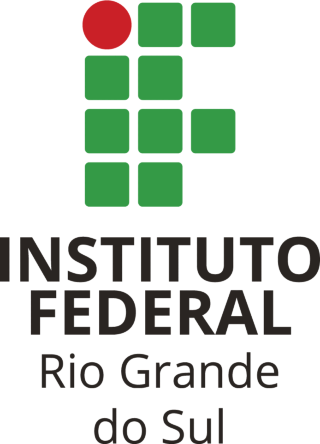Eficiência de fungicidas no controle de doenças foliares na cultura do trigo
| Title: | Eficiência de fungicidas no controle de doenças foliares na cultura do trigo |
| Author: | Garaffa, João Pedro |
| Abstract: |
O trigo é o principal cereal produzido durante os meses de outono-inverno, devido as suas propriedades funcionais, tecnológicas e nutricionais. Levando em consideração seu elevado valor econômico, é fundamental que, durante o manejo para a cultura do trigo, sejam controladas as doenças foliares, que são as principais causadoras da diminuição do rendimento de grãos. Tendo em vista o exposto, objetivou-se com este trabalho avaliar diferentes fungicidas, buscando expressar as melhores alternativas para o controle dos diferentes patógenos que se desenvolvem na cultura do trigo. O experimento foi conduzido na Área Experimental da empresa PesquisAgro no município de Soledade/RS, durante a safra de 2022. Foi utilizada a cultivar de trigo TBIO Sinuelo, em delineamento de blocos casualizados (DBC) com 4 blocos e 11 tratamentos. O tratamento T1 consistiu na testemunha, o qual não recebeu nenhuma aplicação de fungicida; T2: Propiconazol; T3: Pidiflumetofem; T4: Fenpropimorfe; T5: Difenoconazol + Ciproconazol; T6: Epoxiconazol + Cresoxim-Metílico; T7: Ciproconazol + Trifloxistrobina; T8: Metconazol + Piraclostrobina; T9: Ciproconazol + Difenoconazol + Benzovindiflupir; T10: Propiconazol + Pidiflumetofeno + Azoxistrobina; e T11: Protioconazol + Bixafem + Trifloxistrobina. Avaliaram-se as severidades de ferrugem da folha, oídio e mancha amarela em trigo, bem como peso hectolitro, peso de mil grãos e produtividade. O controle com o uso de fungicida proporcionou incremento significativo no rendimento de grãos, no peso hectolitro e no peso de mil grãos, sendo que para o controle da ferrugem da folha os tratamentos Epoxiconazol (Tr) + Cresoxim-Metíl (Es), Ciproconazol (Tr) + Trifloxistrobina (Es), Meticonazol (Tr) + Piraclostrobina (Es), Ciproconazol (Tr) + Difenoconazol (Tr) + Benzovindiflupir (Ca), Propiconazol (Tr) + Pidiflumetofeno (Ca) + Azoxistrobina (Es) e Protioconazol (Tr) + Bixafem (Ca) + Trifloxistrobina (Es) proporcionaram os melhores resultados. Os tratamentos Pidiflumetofem (Ca), Epoxiconazol (Tr) + Cresoxim-Metíl (Es), Ciproconazol (Tr) + Difenoconazol (Tr) + Benzovindiflupir (Ca), Propiconazol (Tr) + Pidiflumetofeno (Ca) + Azoxistrobina (Es) e Protioconazol (Tr) + Bixafem (Ca) + Trifloxistrobina (Es) se destacaram com os melhores níveis de controle para mancha amarela. Para o controle de oídio os tratamentos que apresentaram os melhores percentuais de controle são Difenoconazol (Tr) + Ciproconazol (Tr), Ciproconazol (Tr) + Trifloxistrobina (Es) e Propiconazol (Tr) + Pidiflumetofeno (Ca) + Azoxistrobina (Es). Wheat is the main cereal produced during the autumn-winter months, due to its functional, technological and nutritional properties. Taking into account its high economic value, it is fundamental that, during management for the wheat crop, foliar diseases, which are the main causes of the decrease in grain yield, are controlled. In view of the above, the objective of this work was to evaluate different fungicides, seeking to express the best alternatives for the control of the different pathogens that develop in the wheat crop. The experiment was carried out in the Experimental Area of the company PesquisAgro in the municipality of Soledade/RS, during the 2022 harvest. The wheat cultivar TBIO Sinuelo was used, in a randomized block design (DBC) with 4 blocks and 11 treatments. Treatment T1 consisted of the control, which received no fungicide application; T2: Propiconazole; T3: Pidiflumetofem; T4: Fenpropimorph; T5: Difenoconazole + Cyproconazole; T6: Epoxiconazole + Kresoxim-Methyl; T7: Cyproconazole + Trifloxystrobin; T8: Metconazole + Pyraclostrobin; T9: Cyproconazole + Difenoconazole + Benzovindiflupyr; T10: Propiconazol + Pidiflumethofen + Azoxystrobin; and T11: Prothioconazole + Bixafem + Trifloxystrobin. The severity of leaf rust, powdery mildew and yellow spot in wheat, as well as hectoliter weight, thousand-grain weight and yield were evaluated. The control with the use of fungicide provided a significant increase in grain yield, hectoliter weight and thousand-grain weight, and for the control of leaf rust the treatments Epoxiconazole (Tr) + Cresoxim-Methyl (Es), Cyproconazole ( Tr) + Trifloxystrobin (Es), Methiconazole (Tr) + Pyraclostrobin (Es), Cyproconazole (Tr) + Difenoconazole (Tr) + Benzovindiflupyr (Ca), Propiconazole (Tr) + Pidiflumethophene (Ca) + Azoxystrobin (Es) and Prothioconazole ( Tr) + Bixafem (Ca) + Trifloxystrobin (Es) provided the best results. The treatments Pidiflumetofen (Ca), Epoxiconazole (Tr) + Cresoxim-Methyl (Es), Cyproconazole (Tr) + Difenoconazole (Tr) + Benzovindiflupir (Ca), Propiconazole (Tr) + Pidiflumethophene (Ca) + Azoxystrobin (Es) and Prothioconazole (Tr) + Bixafem (Ca) + Trifloxystrobin (Es) stood out with the best control levels for yellow spot. For powdery mildew control, the treatments that presented the best control percentages are Difenoconazole (Tr) + Cyproconazole (Tr), Cyproconazole (Tr) + Trifloxystrobin (Es) and Propiconazole (Tr) + Pidiflumethofen (Ca) + Azoxystrobin (Es). |
| URI: | https://dspace.ifrs.edu.br/xmlui/handle/123456789/1316 |
| Date: | 2023 |
Files in this item
| Files | Size | Format | View | Description |
|---|---|---|---|---|
| 1234567891316.pdf | 3.606Mb |
View/ |
Texto completo |



